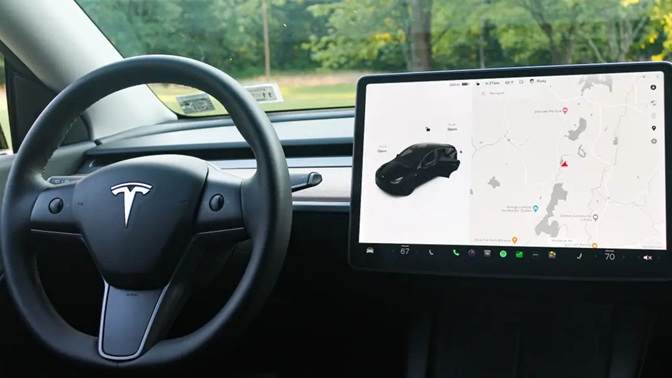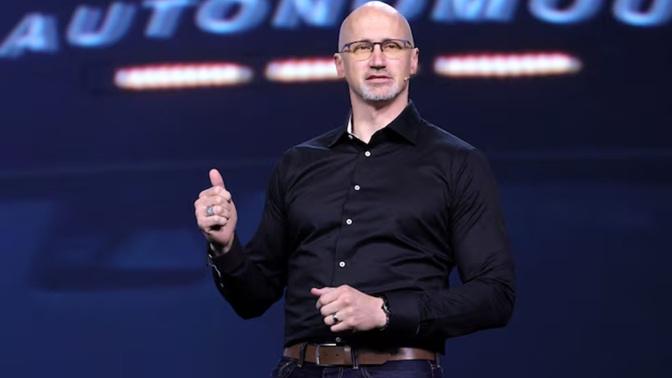In a move that’s turning heads in the automotive world, General Motors has officially hired Sterling Anderson—a well-known name in the world of autonomous driving and electric vehicles—as its new Chief Product Officer. For those following the transformation of the auto industry, this signals something big.

Anderson’s name might ring a bell because of his work at Tesla and as the co-founder of Aurora, a company focused on self-driving technology. His new role at GM could shape the future of how cars are designed, built, and driven—not just in the EV world, but across the industry.
Sterling Anderson’s background reads like a roadmap of automotive innovation. He joined Tesla in 2014, initially working on the Model X. But it was his role as the early head of the Tesla Autopilot program between 2015 and 2016 that earned him industry-wide recognition. He was instrumental in turning Tesla’s advanced driver-assistance system into a key selling point for the brand.
After leaving Tesla, Anderson co-founded Aurora alongside Chris Urmson, who helped launch Google’s self-driving car program (now known as Waymo). Aurora became a leader in autonomous vehicle development, focusing primarily on integrating self-driving systems into commercial trucking fleets.
Now, Anderson is joining GM, starting June 2, as its Chief Product Officer—a brand-new position that GM created for him. The hire is not just strategic; it’s a clear signal that GM wants to supercharge its product innovation, especially as it shifts more aggressively into EVs, autonomy, and connected car technologies.
GM shared some details in an internal announcement, giving us a clearer picture of Anderson’s new responsibilities. As Chief Product Officer, he’ll be in charge of the entire lifecycle of GM’s products—from the early development stages to final production and customer delivery.
More specifically, he will oversee how hardware, software, and services are blended into vehicles across both electric and gasoline-powered platforms. His role will touch everything from engineering and manufacturing to software development and in-car user experience.
Anderson’s direct reports include other high-profile leaders at GM, including:
- Kurt Kelty, another Tesla alum who now heads GM’s battery, propulsion, and sustainability division.
- Josh Tavel, who runs GM’s Research & Development.
- Bariş Cetinok, in charge of Software and Services Product.
- Ken Morris, leading areas like product safety, motorsports, and overall vehicle integration.
In short, Anderson is being handed the keys to one of the most important parts of GM’s future.
GM President Mark Reuss praised Anderson’s arrival, emphasizing his experience in engineering, startups, and software. Reuss said Anderson is “absolutely the right person to help us accelerate the pace of progress” across GM’s massive lineup of cars and trucks.

But what’s especially interesting is this: Sterling Anderson, like many early Tesla leaders, didn’t just work on EVs—they were passionate about them. Anderson was part of the generation at Tesla that genuinely believed in the mission of moving the world toward sustainable transportation. Now he’s bringing that same mindset into a legacy automaker with massive scale.
And he’s not alone. Doug Field, another former Tesla engineering leader, now heads Ford’s electric vehicle operations. Between Ford and GM, Tesla’s influence is quietly spreading across the U.S. auto industry—not as rivals, but as sources of expertise and inspiration.
So, why does Anderson’s new role matter? Because it could redefine how GM designs vehicles in the future—and not just electric ones.
Anderson brings deep knowledge in robotics, motion planning, and autonomous systems. This suggests that GM is not just building EVs; it’s aiming to embed more intelligence into its cars. Think smarter driver assistance, more seamless software experiences, and faster innovation cycles.
It also shows GM is serious about breaking down the walls between hardware and software—a model that Tesla pioneered. In the past, automakers often built the car first, then added tech later. Today, successful EV companies design cars from the ground up with software, connectivity, and driver experience in mind. With Anderson at the helm of product, GM seems ready to embrace that shift in a big way.
Let’s not overlook the big picture here: for years, Tesla led the charge while traditional automakers struggled to keep up. But that’s changing—and fast. With former Tesla minds now embedded in companies like Ford and GM, there’s a real opportunity for these legacy giants to close the innovation gap. And with their massive production capabilities, dealer networks, and global reach, they could take EVs and autonomous driving mainstream even faster than Tesla did.
Sterling Anderson’s move isn’t just a career shift. It’s a sign that the EV revolution is no longer confined to startups and disruptors. It’s now happening from the inside of the biggest carmakers in the world.
GM’s decision to bring Sterling Anderson on board as Chief Product Officer could mark a turning point in the company’s evolution. He brings the mindset, experience, and technical skills that can push GM toward a future where electric vehicles, cutting-edge software, and autonomy come together seamlessly. With people like Anderson steering the ship, GM isn’t just playing catch-up—it’s positioning itself to lead. The next few years should be fascinating.
Source- Reuters
Related Post
